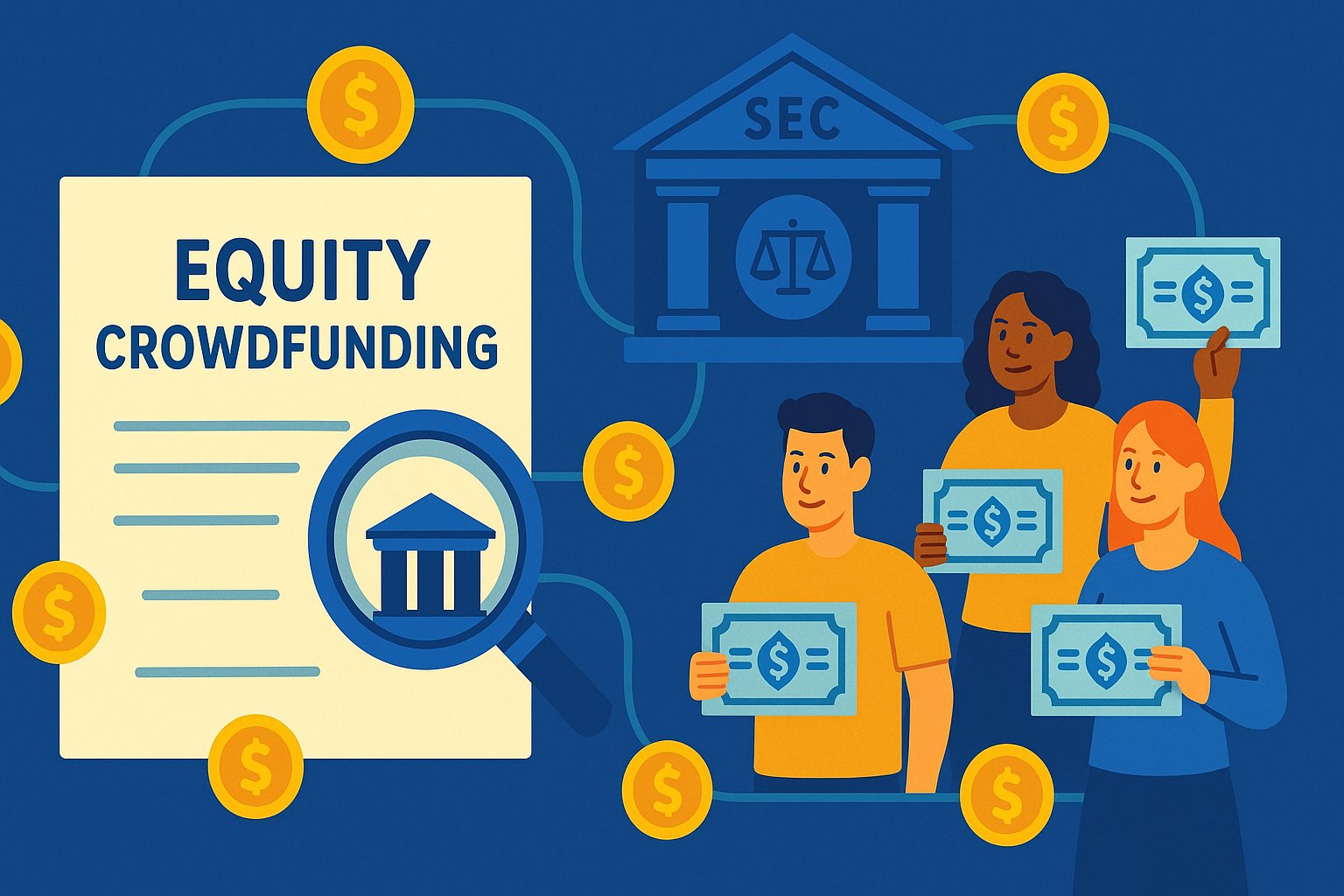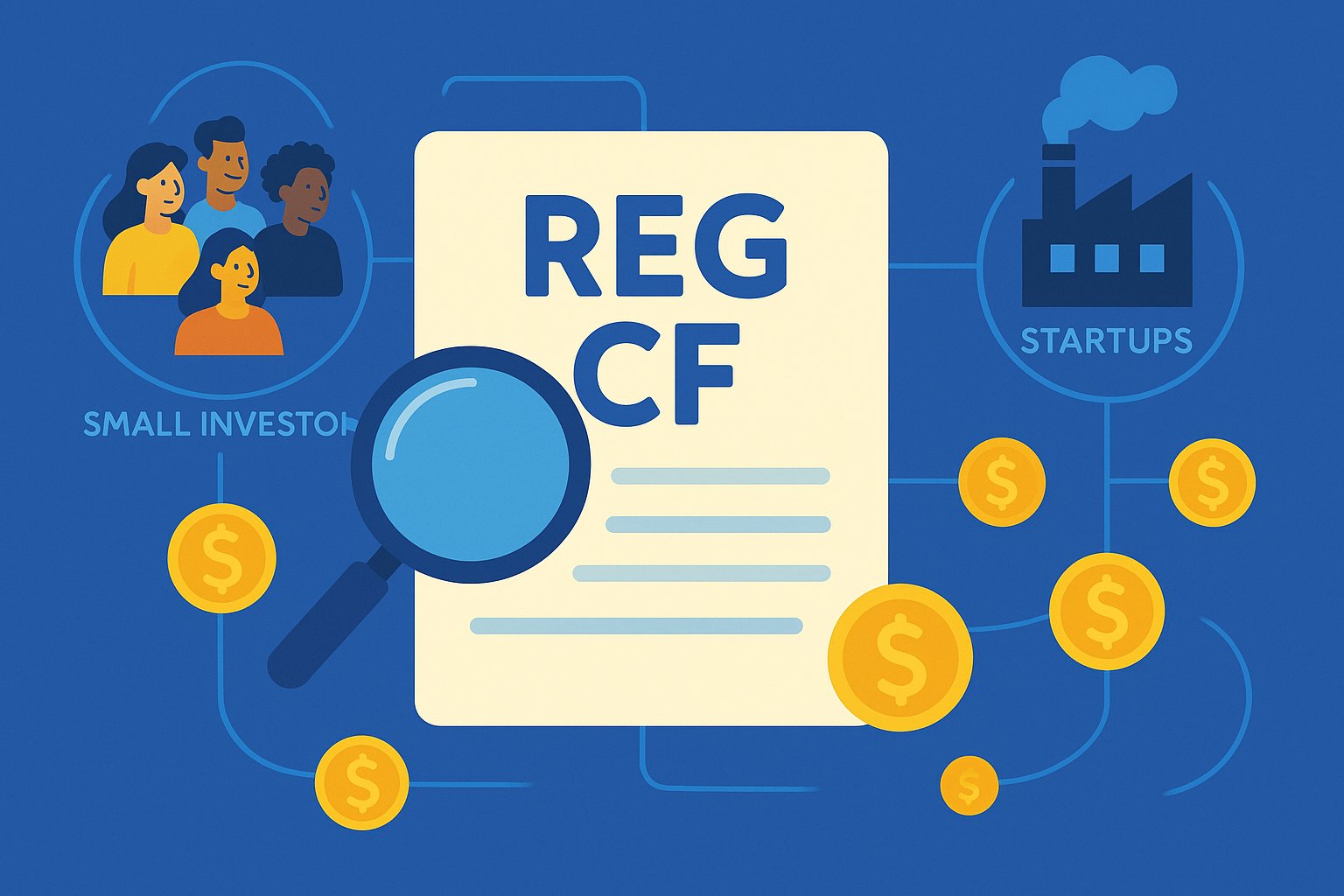Opening the Doors to Equity Crowdfunding: A New Era Under SEC Oversight
Equity crowdfunding has revolutionized the fundraising landscape by allowing everyday investors to own shares in private companies alongside traditional venture capital firms. Gone are the days when access to promising startups was reserved for the ultra-wealthy; today, thanks to regulatory reforms and technological platforms, individual investors can participate in early-stage ventures with modest capital. At the heart of this transformation lies the U.S. Securities and Exchange Commission (SEC), whose role is critical in balancing the dual imperatives of investor protection and capital formation. By crafting and enforcing rules under the JOBS Act and subsequent amendments, the SEC has shaped a framework that governs who can invest, how much they can contribute, and what information issuers must disclose. For entrepreneurs seeking funding and for investors seeking opportunities, understanding the SEC’s equity crowdfunding regulations is not just academic—it is essential for compliance, risk management, and strategic decision-making in this dynamic space. The democratization of private investment through equity crowdfunding represents a seismic shift in how businesses raise capital. Startups no longer need to rely exclusively on angel networks or venture capital arms to secure seed funding; instead, they can tap into a broader base of supporters who believe in their mission. Meanwhile, investors—motivated by the potential for outsized returns, community engagement, and the thrill of backing innovation—have welcomed the opportunity to diversify their portfolios beyond public equities and bonds. Yet with this open access comes inherent risk. Early-stage companies are inherently volatile, and the lack of liquidity in private markets can tie up investor funds for extended periods. Recognizing these challenges, the SEC has implemented a range of safeguards aimed at curbing fraud, ensuring transparent disclosures, and providing mechanisms for redress when necessary. In this article, we will explore the genesis of equity crowdfunding under the SEC’s purview, dissect the regulatory requirements for issuers and investors, and highlight best practices for navigating this rapidly evolving domain.
Understanding Equity Crowdfunding
Equity crowdfunding allows companies to raise capital by offering ownership stakes—such as common stock, preferred stock, or convertible notes—to a large pool of investors through online platforms. Unlike reward-based or donation-based crowdfunding, where contributors receive products, perks, or goodwill, equity crowdfunding provides a financial stake in the company’s future success. This model appeals to entrepreneurs seeking both capital and brand advocates, as backers often become evangelists who champion the product or service. From a regulatory standpoint, equity crowdfunding falls squarely within securities law, triggering the need for compliance with the Securities Act of 1933 and related SEC rules. The key distinction between equity crowdfunding and traditional private placements is the inclusion of non-accredited investors—individuals who do not meet the high net worth or sophisticated investor thresholds that have historically governed private capital markets. Equity crowdfunding platforms serve as intermediaries, facilitating the connection between issuers and investors, managing escrow accounts, and ensuring that legal and financial disclosures meet SEC requirements. These platforms must register either as broker-dealers or funding portals with the SEC and adhere to Know Your Customer (KYC) and Anti-Money Laundering (AML) protocols. Issuers benefit from the platform’s reach, marketing tools, and expertise in campaign execution, but also bear the burden of transparency and ongoing reporting. For investors, the allure of equity crowdfunding lies in the potential for high-growth returns and the ability to support ventures aligned with personal interests or social values. At the same time, they must be vigilant in conducting due diligence, understanding the illiquid nature of private shares, and recognizing the possibility of total loss if a company fails to achieve traction.
The SEC’s Role and the JOBS Act
The landscape of equity crowdfunding in the United States was profoundly altered by the Jumpstart Our Business Startups (JOBS) Act, signed into law in April 2012. Title III of the JOBS Act mandated the SEC to create rules facilitating crowdfunding of securities via online platforms. By May 2016, Regulation Crowdfunding (Reg CF) took effect, governing offerings up to $1.07 million in a 12-month period. This threshold was designed to promote small-scale capital formation while limiting systemic risk. The SEC’s mandate under the JOBS Act was to craft a rule set that allowed broad participation—including non-accredited investors—while instituting adequate protections through disclosure requirements, investment limits, and registration of intermediaries. The agency conducted extensive stakeholder outreach, held public comment periods, and revised draft proposals before finalizing the rules.
Beyond Reg CF, the SEC also established Regulation A+ (Reg A Tier 2) and amended Regulation D to expand exemptions for private placements. Reg A Tier 2 permits issuers to raise up to $75 million with scaled disclosure obligations, and Rule 506(c) under Reg D allows solicitations to accredited investors with unlimited capital raises. Yet, it is Reg CF that uniquely combines low entry barriers for issuers with capped fundraising limits designed to align with the risk tolerance of individual investors. The SEC’s ongoing role involves reviewing Form C filings, monitoring platform compliance, and pursuing enforcement actions against fraudulent issuers or platforms. By setting and enforcing these rules, the SEC aims to foster capital formation for small businesses while maintaining market integrity and safeguarding investor interests.
Key SEC Rules and Registration Requirements
Under the SEC’s framework, equity crowdfunding platforms must register either as broker-dealers under the Securities Exchange Act of 1934 or as funding portals under the JOBS Act. Broker-dealers enjoy broader authority—they may offer investment advice, facilitate transactions, and underwrite offerings—but they face rigorous capital, recordkeeping, and supervisory obligations. Funding portals, by contrast, are limited to providing a marketplace for offerings, hosting issuer content, and facilitating the flow of funds; they may not offer investment advice or receive transaction-based compensation. Both intermediaries must register with the SEC and become members of the Financial Industry Regulatory Authority (FINRA), adhere to AML and KYC requirements, and implement procedures to detect and report suspicious activities.
Issuers seeking to conduct an equity crowdfunding campaign must file Form C with the SEC, detailing the company’s business plan, financial condition, use of proceeds, capitalization table, officer and director backgrounds, and material risks. Financial statement requirements vary by fundraising tier: issuers raising up to $107,000 can submit self-certified statements; those raising between $107,000 and $535,000 need reviewed statements; and campaigns seeking $535,000 or more require audited financials. This tiered approach balances the need for investor information with the economic feasibility for small issuers. Once the offering is live, issuers must file a Form C-U annual report and update investors on any material changes via amendments to the Form C. These registration and disclosure mandates underscore the SEC’s commitment to transparency in the equity crowdfunding process.
Investor Protections and Contribution Limits
A cornerstone of SEC regulation in equity crowdfunding is the prohibition of excessive risk-taking by non-accredited investors. To that end, the SEC imposes investment limits based on annual income and net worth. Investors with either income or net worth below $124,000 may invest the greater of $2,200 or 5% of the lesser of their annual income or net worth. Those exceeding both thresholds can invest up to 10% of annual income or net worth, capped at $124,000 annually. These limits safeguard individuals from allocating disproportionate sums to high-risk early-stage ventures. Platforms facilitate compliance by requiring prospective investors to self-certify financial information before making a commitment.
Beyond quantitative caps, the SEC mandates standardized risk disclosures on all crowdfunding platforms. These disclosures inform investors of the potential for total loss, the lack of liquidity in private securities, and the importance of diversification. Platforms must present these warnings conspicuously and provide educational materials that clarify the mechanics and risks of equity crowdfunding. By embedding these protections into the user experience, the SEC aims to ensure that non-accredited investors make informed decisions rather than being lured by hype or incomplete understanding.
Issuer Obligations Beyond Initial Disclosure
While the initial Form C filing establishes a baseline of transparency, equity crowdfunding issuers bear ongoing obligations to keep investors apprised of material developments. Each year until the earlier of termination, withdrawal, or an event triggering Exchange Act reporting requirements, issuers must file a Form C-U. This annual update details the company’s financial performance, changes in management, use of proceeds, and any new risk factors. Should any material change occur during the campaign or between annual filings—such as a major contract loss, leadership restructuring, or legal proceeding—issuers must promptly file a Form C/A amendment to inform investors. Issuers are also responsible for complying with securities laws at the state level, known as “blue sky” regulations. Although Reg CF provides some preemption of state registration, issuers may still face notice filings or fees in certain jurisdictions. Furthermore, issuers must maintain accurate records of each investor’s holdings, manage shareholder communications, and facilitate any corporate actions such as voting or dividend distributions. By fulfilling these duties, issuers demonstrate their commitment to transparency and mitigate the risk of regulatory scrutiny or investor litigation down the line.
The Role and Responsibilities of Intermediaries
Equity crowdfunding platforms serve as gatekeepers to the investment process, performing critical functions that underpin the SEC’s regulatory framework. Platforms must conduct due diligence on issuers, verifying the accuracy and completeness of Form C disclosures and ensuring compliance with bad actor provisions. They manage escrow or segregated accounts to hold investor funds until the campaign meets its target threshold, and they disburse funds only upon successful closing. Platforms are also charged with monitoring campaigns for potential fraud, receiving and addressing investor complaints, and maintaining robust cybersecurity measures to protect sensitive financial and personal data.
Funding portals and broker-dealers must implement compliance programs that include written policies and procedures, ongoing employee training, and annual audits of their supervisory systems. They must file annual reports with the SEC and FINRA, detailing operational metrics, complaint logs, and any disciplinary history. These requirements ensure that platforms maintain high standards of integrity and accountability. By embedding professional oversight into the crowdfunding process, intermediaries help to foster investor confidence and preserve the credibility of the equity crowdfunding market.
Compliance Challenges and Enforcement Actions
Despite the regulatory guardrails, the equity crowdfunding space is not immune to misuse or noncompliance. The SEC has pursued enforcement actions against issuers that misrepresented financial statements, diverted campaign proceeds for unauthorized purposes, or failed to file required annual updates. Platforms have also faced sanctions for inadequate due diligence or lax anti-fraud controls. Such enforcement actions underscore the SEC’s willingness to act decisively to protect investors and uphold market integrity. They also serve as cautionary tales for issuers and intermediaries alike, highlighting the importance of robust compliance programs and transparent communication practices. Navigating the compliance landscape can be daunting, especially for first-time issuers. Common pitfalls include misunderstanding financial statement thresholds, neglecting state-level filing requirements, and underestimating the resources needed for ongoing reporting. Platforms can mitigate these challenges by offering issuer education, compliance checklists, and access to legal counsel. Issuers, in turn, should assemble dedicated teams or retain advisors who specialize in securities law to guide them through each regulatory milestone. By proactively addressing compliance risks, stakeholders can reduce the likelihood of enforcement actions and build a reputation for trustworthiness.
Managing Risk and Conducting Due Diligence
For investors drawn to the promise of early-stage equity, conducting thorough due diligence is paramount. Unlike public markets, where financial statements are audited and readily available, private companies can vary in the rigor and reliability of their reporting. Investors should scrutinize a company’s business model, market traction, management team credentials, and competitive landscape. Engaging third-party advisors—such as accountants, lawyers, or industry experts—can provide additional layers of scrutiny. Platforms may offer basic background checks, but ultimate responsibility for investment decisions rests with the individual investor.
Diversification remains a key risk management strategy in equity crowdfunding. Given the high failure rate of startups, spreading investments across multiple campaigns can mitigate the impact of any single loss. Investors should also be mindful of the illiquidity inherent in private shares: most Reg CF securities are subject to a one-year holding period before resale, and secondary markets are still nascent. Considering the potential for extended investment horizons and limited exit options, individuals must align their crowdfunding commitments with long-term financial goals and liquidity needs.
Emerging Trends and Future Outlook
The equity crowdfunding landscape continues to evolve as technology, regulation, and market dynamics intersect. Blockchain and tokenization have entered the conversation, with some platforms exploring distributed ledger technology to enhance transparency, automate compliance, and enable fractional ownership at unprecedented scales. The SEC has signaled interest in tokenized securities, but regulatory clarity remains a work in progress. Meanwhile, calls to increase the Reg CF fundraising cap—currently set at $5 million—gain momentum, reflecting both inflationary pressures and growing demand from issuers seeking larger pools of capital.
On the investor front, the development of secondary trading venues promises to address liquidity challenges, though robust regulatory frameworks will be needed to balance market fluidity with investor protection. Internationally, jurisdictions such as the United Kingdom, Canada, and Singapore are refining their own equity crowdfunding rules, creating cross-border investment opportunities and potential harmonization of standards. For issuers and investors alike, staying attuned to these emerging trends—and engaging with policymakers, industry groups, and platform intermediaries—will be critical to navigating the next phase of equity crowdfunding’s evolution.
Empowering Your Equity Crowdfunding Journey
Equity crowdfunding under SEC oversight offers a powerful mechanism for democratizing capital formation and broadening investment participation. By understanding the regulatory framework—from Form C disclosures and financial statement thresholds to intermediary registration and investor protections—stakeholders can undertake compliant campaigns that balance innovation with risk management. Issuers benefit from access to a motivated investor community and marketing amplification, while individual backers gain exposure to high-growth potential ventures. Yet success in this arena requires more than enthusiasm; it demands rigorous due diligence, robust compliance infrastructure, and continuous engagement with evolving regulations. As the equity crowdfunding ecosystem matures, those who master its intricacies—leveraging best practices in disclosure, platform governance, and investor education—will stand out in a crowded field. Whether you are launching your first campaign, considering your investment strategy, or developing the next generation of crowdfunding technology, the SEC’s rules provide both a foundation and a roadmap. Embrace the opportunities, respect the responsibilities, and chart your path with confidence. In doing so, you will not only participate in a transformative chapter of financial history but also help shape an inclusive, resilient, and innovative capital market for years to come.




